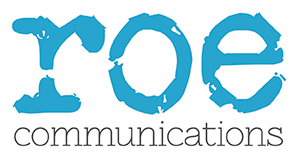It’s that time of the year again when business school communications teams allocate their PR budgets for next year.
Deciding where to invest money isn’t easy. Moreover, we know that budgets for business school marketing communications are tight.
Against this backdrop, it is even more important for business schools to get a better return on investment.
Are business school PR budgets increasing or decreasing?
Earlier this year, we, along with our friends, Carrington Crisp and EFMD, released new research into the biggest challenges faced by marketing communications professionals in business schools.
“Lack of budget” was the second biggest challenge, identified by 44 per cent of respondents, after “short-term thinking”.
Looking at budgets specifically, 54 per cent of schools expected budgets to increase over the next three years. But that still left 47 per cent expecting to see either a cut in budgets or budgets staying the same despite inflationary pressures.
The reality is that most business schools (53 per cent) spend less than five per cent of institutional revenues on their marcomms. And they are being asked to perform better, despite a lack of resources.
Focus on impact
When more is expected with the same or fewer resources, business schools need to focus on activities that will have the biggest impact on their school strategy.
When schools are trying to improve their visibility in the media, thoughts often turn to doing more. More press releases, more pitches to journalists, more media invites.
And yes, sometimes it results in media coverage.
But looking at it more closely, how effective is it?
- Does a small mention of a business school’s name in untargeted media outlets help them sell more programmes or recruit quality faculty?
- Does sending out press releases on multiple topics help a school build a strong reputation for their core areas of expertise?
- Does sending out irrelevant content to multiple journalists help build strong relationships with them?
The reality is that a scattergun approach won’t support a business school’s long-term organisational goals.
Here’s what works instead.
1. Invest in activities that support your strategic objectives
Business schools with the strongest reputations align their PR activities with their strategic objectives. For example:
- Are they trying to attract new students from international markets?
- Do they want to sell more executive education programmes to companies?
- Are they trying to become known for a particular specialism such as family business or digital transformation?
Your PR budget should be guided by your strategic goals – and resources allocated accordingly.
2. Prioritise differentiation
Constant topic-switching and short-term thinking prevent a school from establishing itself as an authority in a specific field.
Business schools that stand out concentrate on what makes them different – and invest their resources accordingly.
In practice, that might necessitate the courage to say “no” to projects that don’t serve your purposes.
3. Think long-term
In our survey of business school communicators (see above), short-term thinking stood out as the number one challenge they face in their day-to-day roles.
But when it comes to the media, nurturing strong relationships takes time and consistency.
When schools are allocating their PR budget, they need to think about how they can support this – both this year and into the future.
– Do they have the skills or seniority to build those relationships at a high level – or do they need to invest or outsource?
– Should they put money aside for meeting with journalists or inviting them on campus visits?
– Have they got enough quality content to tempt journalists, or do they need additional story-gathering resources?
4. Look at where you can work smarter
Schools that get the best ROI from their PR budgets also look at where they can work smarter.
Analysing your previous results is helpful here. Which projects worked, and which didn’t?
Were there campaigns where you made a big effort, but got little return? Would it have been better to do it another way? Or not at all?
A common example among business schools is the number of press releases they issue. Yes, journalists still want press releases. But the problem lies when schools send out too many, on all sorts of things.
Unless it’s a big story, it’s usually not worth it – and it might be better either sell an exclusive to one influential media outlet or consider other communications channels such as social media.
Some of this may mean educating stakeholders internally about what works and what doesn’t so that they can support you better.
5. Agree on how you will measure success
PR is not a “set it and forget it” activity.
Without having clear, specific PR objectives from the outset, you will be unable to show how your campaign contributes to your school’s growth overall.
In years gone by, people used to believe that PR was tricky to measure compared to other marketing disciplines. This is no longer the case.
Analytics tools can help track performance against KPIs such as media placement, coverage views, target audience reach, social media shares and so on.
These metrics can show how you are making an impact AND help you adjust and refine your programme and PR budget as you progress.
A powerful tool for brand awareness
In today’s competitive business education market, PR remains a powerful tool for building brand reputation, increasing awareness, and engaging with stakeholders.
However, getting a significant return on investment (ROI) from your PR efforts can be a challenge, particularly if budgets are tight.
As we approach 2025, the media landscape continues to evolve, and optimising your PR budget is more important than ever.
That old adage about working smarter, not harder, is more appropriate than ever.
More information
Our research into the challenges faced by marcomms professionals in business schools is still available to download HERE.
And if you want more information on our strategic approach to PR for business schools, do get in touch!


